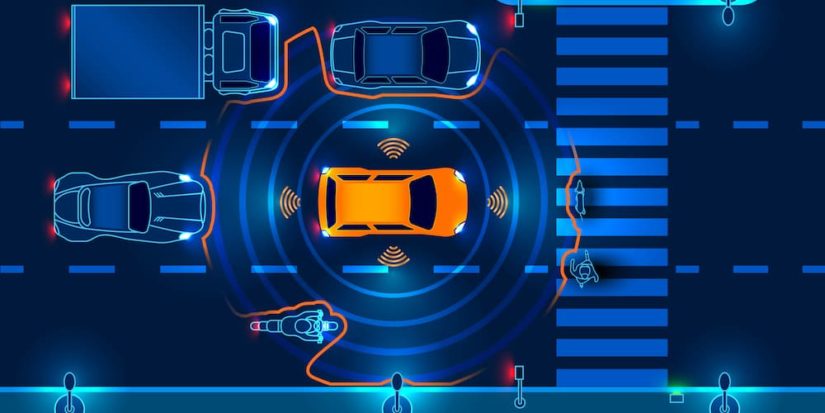When you’re shopping for a car, there are two major safety ratings you should look for: the number of stars (out of five) from the National Highway Traffic Safety Administration (NHTSA) and the picks and ratings from the Insurance Institute for Highway Safety (IIHS). Both of these organizations are dedicated to improving safety on the road, and in this effort, they put vehicles through numerous tests each year in order to see which models help best protect their drivers. Recently, the IIHS announced that in addition to the tests they’ve been running for decades, they’re going to start evaluating the partial automation systems on vehicles.
What Is Partial Automation?
The recent announcement from the IIHS specifically involves partial automation systems that allow for what’s often advertised as “hands-free” driving. These safety systems use other advanced safety features in order to let your vehicle handle a lot of the driving for you, but they’re not fully automated or self-driving yet. In most cases, the vehicle will use adaptive cruise control, which not only sets a speed but adjusts to vehicles slowing down or stopping, along with radar, cameras, and lane-centering to let the vehicle take over and do a lot of the driving for you on approved highways.
These kinds of systems have different names, depending on the car company you look at, including Super Cruise from GM, BlueCruise from Ford, and Autopilot from Tesla – though most major brands have something similar with their own name. One of the arguments the IIHS presented in announcing this new testing is that these companies are overselling the amount of autonomy the programs deliver on and that they still require the full attention of the driver. I can’t help but agree that a name like “Autopilot” suggests the car will drive itself, but the reality is that you still need to be just as present as when you’re the one driving.
How Does the IIHS Test Vehicles?
The majority of the IIHS testing is done with practical tests: when they test for crashworthiness, they don’t go off manufacturer specs or computer simulations. They buy a vehicle from a dealership, just like you or I would, and crash it – usually a couple of times – to see how it holds up in such a collision. Other aspects of every model are also tested in similar ways. When they test the headlights on each model, they check to see the actual distance the lights illuminate when going straight on the road, when changing lanes or making turns, and when following curves for freeway on and off-ramps to see just how well they work.

What Goes Into the Safety Ratings and Picks?
Whereas the NHTSA gives a numerical star rating, the IIHS uses a different system that evaluates each aspect of a vehicle individually. This includes frontal crash tests, side crash tests, roof strength tests, testing seat restraints, front crash prevention systems, and the headlights. You can find the specific protocols used to test all of these things on the IIHS website, which ensures total clarity and transparency in their procedures.
Once they perform their tests, they then provide each of these categories with one of the following ratings: Poor, Marginal, Acceptable, or Good. For some categories that have different types of standards, like the front-crash prevention system on a vehicle, they use Basic, Advanced, and Superior instead. With most categories, however, you’re looking for a Good rating as the best option; Acceptable means there’s room for improvement, while both Marginal and Poor means the vehicle didn’t perform well.
Finally, once they’ve run their tests and provided ratings for all of these different categories, they look at them and name certain models as their safety picks. Vehicles that do very well are named Top Safety Pick, while those that surpass that are named Top Safety Pick+. The difference often comes down to standard vs available features. For example, the 2021 Honda Civic was a Top Safety Pick because the standard headlights were Poor, but the available ones were Good; when those headlights became the new standard for the 2022 model, then the Honda Civic was named a Top Safety Pick+.
New Guidelines for Automation
Now, the IIHS is going to introduce a new category to go with the rest of these tests: Partial Automation (that might not be the final name they choose, we’ll have to see). They’re not testing the actual partial automation features themselves – much of this is already included in front crash prevention – but rather how well vehicles use safeguards to ensure drivers remain focused on the road with Super Cruise or Autopilot engaged. The IIHS is concerned, rightly so, that when someone hits the BlueCruise button, they then feel like they can ignore the road when that’s absolutely not the case.
This has come about, at least in part, due to a number of recent crashes and collisions caused by drivers no longer paying attention to the road after activating partial automation. In many of these cases, drivers have been seen watching videos on their phones or even playing video games while behind the wheel, apparently believing their vehicle is something out of a sci-fi movie. The IIHS is concerned that these features are being sold so aggressively that drivers don’t understand the limitations of such systems and become complacent.
Although they haven’t revealed all of their planned testing guidelines, the IIHS did reveal what they expect from a vehicle in order for it to receive a Good rating on these tests:
- Monitor both the driver’s gaze and hand position.
- Use multiple types of rapidly escalating alerts to get the driver’s attention.
- A fail-safe system that slows vehicle, notifies manufacturer, and locks out automation for the remainder of the drive.
- Automated lane changes must be initiated or confirmed by the driver.
- Adaptive cruise control does not automatically resume after a lengthy stop or if the driver isn’t looking at the road.
- Lane centering doesn’t discourage steering by the driver.
- Automation features can’t be used with the seatbelt unfastened.
- Automation features can’t be used with other systems like automatic emergency braking and lane departure prevention disabled.
All of these requirements are intended to ensure that a driver is paying attention by tracking eye movements and hand position, something most of these automated driving systems can already do. The rapid and escalating alerts, however, would be new and help ensure attentiveness, along with locking out the system if someone fails to remain attentive. In particular, I like the push to ensure that the lane centering system doesn’t discourage driver input. Many of these systems will shut off if the driver nudges the wheel, which encourages you to stop making any subtle moves in order to keep automation going – instead, the system should work with you and encourage you to remain engaged as the driver.

When Will This Testing Begin?
At the moment, the IIHS has announced that they want this testing to start this year, though there’s a possibility that it might not happen. The chip shortages and general supply chain problems facing the auto industry have made it difficult for organizations like the IIHS to get the test vehicles they need. So we might see this slip into next year, but hopefully, we’ll at least get some early initial tests this year, even if they’re not used for the official safety picks.
What Does This Mean for You?
As a car buyer, this is fantastic news for you since you’ll be able to get a better sense of how well these systems function in a vehicle you’re interested in. There’s no denying that increased safety testing and ratings that empower consumers have been a great thing for all of us, creating safer vehicles and reducing crashes, injuries, and fatalities on the road. More testing means more information; being informed about your decision is the best way to ensure you get the right vehicle. If manufacturers are held to a higher standard, especially when it comes to designing automation systems that keep everyone safe on the road, then we get better vehicles. Just remember that we might not have these numbers this year, so you may find it most useful if you’re planning on getting a new vehicle either next year or soon after.



